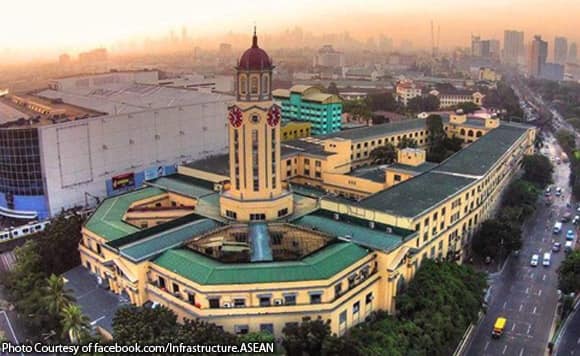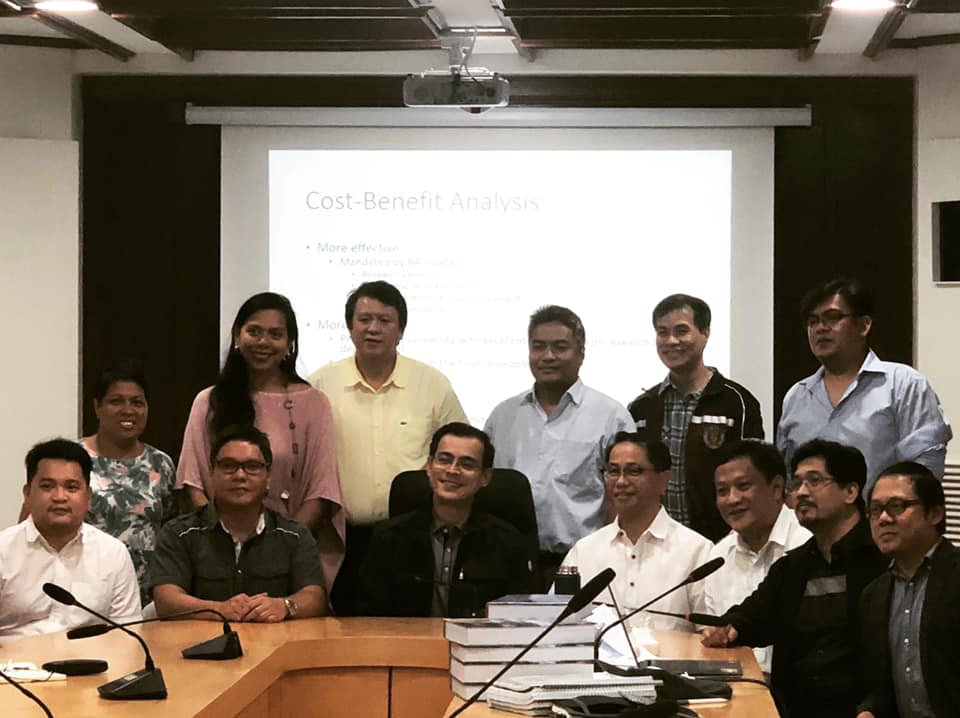
The University of the Philippines Resilience Institute (UPRI) is leading the state university’s system-wide efforts to help Manila develop from being a least-resilient city into a disaster-resilient city within 2 years.
UP System officials led by President Danilo Concepcion, Regent Jijil Jimenez and UPRI Executive Director Dr. Mahar Lagmay met with Manila City Mayor Isko Moreno Domagoso on September 11 to discuss plans for building a disaster risk management (DRM) program that covers hazard map creation, updating the city’s land-use plan created in 2002, and efficient forecasting that utilizes robotics-like technology.
The plan includes the setting up of a command center that would allow the city government to make DRM decisions, such as class suspensions, based on precise data collected at the center from field sensors that perform like robots in passing on information.
“This is the latest and most advanced if not in the country, then in the world,” said Dr. Lagmay about the technology that will be used to develop Manila as a smart and resilient city. Dr. Lagmay also heads the UP Nationwide Operational Assessment of Hazards (Project NOAH), the Smart City Asia Pacific Awards-winning program he previously led for the Department of Science and Technology before it was reverted back to UP’s management in 2017.
The UPRI presentation provided the following details for the project that would cost Php20 million:
YEAR 1
- Land Use and Development Plan Updating (Php7.5 million)
- Internet of Things-based decision support system, installation of sensors (Php3.5 million)
- Enhanced Climate and Disaster Risk Assessment (Php2.5 million)
- Institutional Analysis and DRRM System Development (Php1.5 million)
YEAR 2
- Action Planning (Php2.5 million)
- Capacity Building, emergency simulation and training programs (Php1.5 million)
- Development of Risk Communication Products (Php1 million)
The city government has said it hopes the UP-led project will help Manila raise its status as a resilient city.
“We pay the price today so the future of our generation will have this kind of new Manila, bagong Maynila,” said Mayor Isko Moreno Domagoso after approving the DRM proposal.

Good News Pilipinas talked to UPRI’s Dr. Mahar Lagmay about the Manila City Project and what UP hopes to achieve.
Good News Pilipinas (GNP): How and why did UPRI get into a collaboration with the City of Manila?
Dr. Mahar Lagmay (ML): We proposed a disaster resilience program for the city of Manila putting emphasis on anticipatory planning and use of advanced science and technology. I guess Mayor Isko saw the need for such plans to be implemented in Manila by the University of the Philippines System. UP, after all, was first established in Manila and is a stakeholder of the city.
GNP: What would be the roles of different UP units and sectors in setting up this resilient city plan?
ML: In planning communities to become resilient, it is important to consider all sectors, such as health, biodiversity, agriculture, forestry, water, coastal, environment, energy, education, infrastructure, settlement, and tourism.
The University of the Philippines System has expert practitioners in all these fields. We have UP Manila specialists on health and biodiversity; UP Diliman authorities on education, coastal, environment, energy, education, infrastructure, settlement and tourism planning; UP Los Banos experts on agriculture and forestry; and UP Visayas faculty who study coastal and environmental concerns, among others.
We also need the science to be embraced by the people. We can use the social sciences, arts, and the humanities to get Manilenos to become aware of resilience-related information. For example, music can be made to raise awareness on disasters in the same way that we can teach Philippine history through songs (e.g. Magellan by Yoyoy Villame).
Furthermore, UP faculty by virtue of their work, are abreast with the latest trends in science and cutting edge technologies. UP intends to harness that knowledge from their deep pool of professionals to help Manila attain the sustainable development goals (SDGs).
The UPRI chief also called on UP community volunteers to the project, saying, “We have been given the opportunity to help Manila. Here’s your chance, Iskos and Iskas of UP, to volunteer and help in this challenge to bring back the glory of Manila.”
For updates on the project and how to volunteer, check out the UP Resilience Institute.
The University of the Philippines recently broke into the World University Rankings Top 500 educational institutions with strong research capabilities.
UP Los Banos education has also been credited for dominating the licensure examinations for Foresters and innovating on environmental models such as edible landscapes.
The UP Manila campus was also largely credited for leading the state university in worldwide health research rankings.
Meanwhile, UP Diliman through the Institute of Biology, is leading pioneering efforts for DNA Barcoding to protect wildlife.
SEND congratulations and well wishes to the University of the Philippines System and Manila City government for helping the Philippines’ iconic Manila develop into a smart and disaster-resilient city!
CHECK OUT the UP presentation streamed live by the City of Manila here
Like, Follow, Subscribe to GoodNewsPilipinas.com Facebook, Twitter, Instagram, Good News Pilipinas! TV on YouTube, new story notifications and e-mail newsletters for updates on more Filipino Pride stories.










